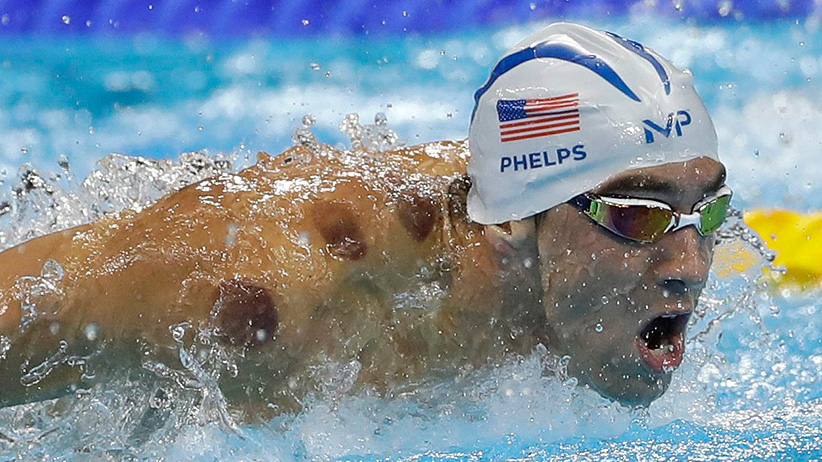Cupping: (Not just for Olympians.)
Flare editor Maureen Halushak talks with a practitioner of the treatment in the Olympics spotlight
United States’ Michael Phelps competes in a heat of the men’s 200-meter butterfly during the swimming competitions at the 2016 Summer Olympics, Monday, Aug. 8, 2016, in Rio de Janeiro, Brazil. (Matt Slocum/AP)
Share

Reprinted from Flare, our sister publication:
“It’s a huge moment for cupping,” says Jason Tarter, a traditional Chinese medicine practitioner at the Traditional Healing Centre in Aurora, Ont. I’m his third interview of the day, following the media buzz surrounding photos of several U.S. Olympians—including, most famously, gold medal-machine Michael Phelps—sporting sets of uniform, circular bruises on their legs, backs and chests. But this isn’t the first time the ancient practice has trended: Gwyneth Paltrow made the bruises a trendy body mod back in 2004, while Justin Bieber and Kim Kardashian have also tried it out.
The practice involves quickly passing a heat source (Tarter uses a flaming cotton ball gripped by a set of forceps) under a special glass cup; the heat creates a suction effect and the cup is placed directly onto the skin—this process is repeated with new cups until the desired area is covered. The cups then remain on skin for up to 20 minutes, depending on the condition that’s being treated, with the suction allegedly reaching deeper muscles than what your RMT can access during a manual massage.
Related: Michael Phelps: Red, white and … bruised?
And those telltale bruises? Call it the hickey effect: while Tarter says that the procedure is painless, the suction does cause broken capillaries. (Interestingly, he suggests the colour of the bruising can reflect one’s physical and emotional state: “Someone who has a lot of pain, anger, frustration, stress—their bruising tends to be dark red or purple.” Note to Michael Phelps: R U OK?)
While cupping is not for everyone—Tarter notes that pregnant women, people with chronic skin conditions (psoriasis, acne, eczema) and anyone wanting to treat a fresh, still-inflamed sprain or strain should avoid it—it can be a good option for both the desk- and podium-bound.
“I see a huge amount of people who have tight shoulders, and afterwards they can move their shoulders a lot more,” he says. “If I’m stressed out and get a cupping treatment, I feel so much better afterwards.” (Um, SOLD.)
But while Tarter is very obviously pro-cupping, he doesn’t consider it a standalone treatment and typically incorporates it alongside other TCM practises, such as acupuncture. That said,with all the current buzz, it wouldn’t be surprising to see “cupping studios” coming soon to so-trendy-it-hurts neighbourhoods like Toronto’s King West. Entrepreneurial types, you read it here first.